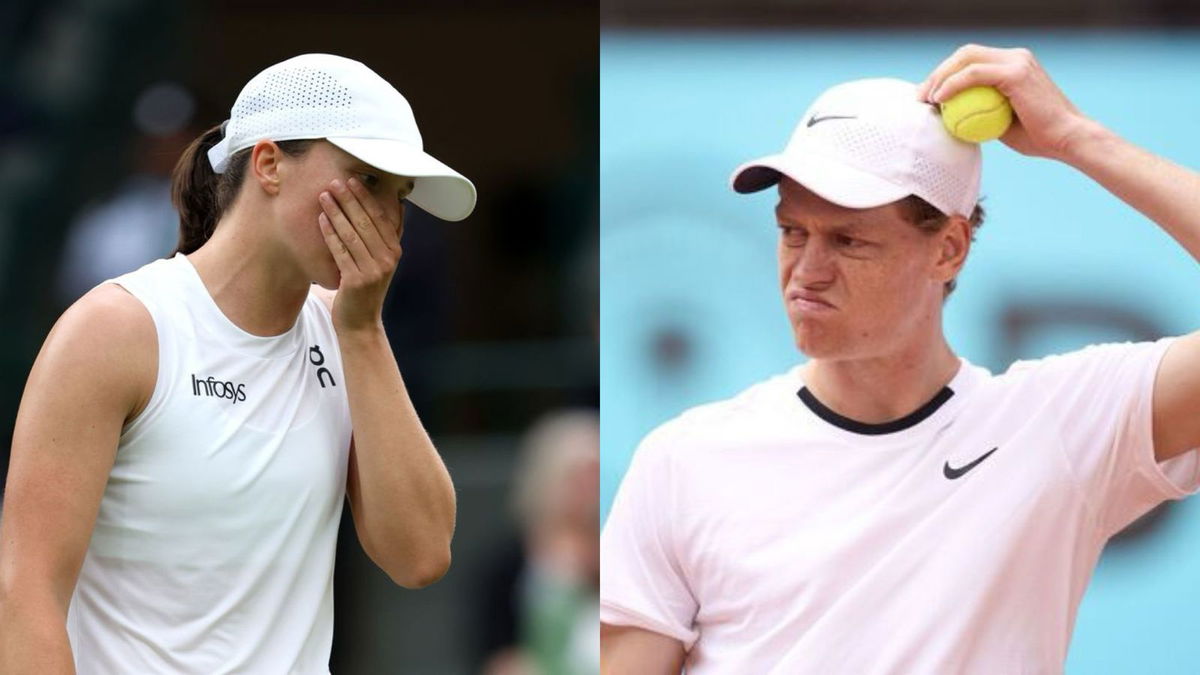

What happens when the rules meant to protect athletes end up raising more questions? The 2024 tennis season has seen top players like Jannik Sinner and Iga Swiatek embroiled in doping controversies. The cases have sparked a major debate in the tennis world, forcing a closer look at how the rules are applied. The World Anti-Doping Agency (WADA)’s Executive Committee and Foundation Board met in Riyadh, Saudi Arabia on 5 December to discuss and implement new rules to maintain the integrity of sports.
Watch What’s Trending Now!
Talking about the cases, World No.2 Iga Swiatek tested positive for trimetazidine in August 2024, leading to a one-month suspension. The International Tennis Integrity Agency (ITIA) accepted her explanation that the banned substance resulted from contamination of non-prescription medication used for jet lag and sleep issues. In her case, Rule 10.6.1 of the WADA rules could be applied since she took a legal product that had been contaminated. The rule allows for a reduction of up to 100% of the two-year ineligibility.
ADVERTISEMENT

Jannik Sinner tested positive for the anabolic steroid clostebol in March 2024. An independent tribunal cleared him of wrongdoing, accepting his defense that the banned substance entered his system unintentionally through a massage from his physiotherapist, who had used a spray containing clostebol for a personal injury. That’s why Sinner did not qualify for rule 10.6.1 as his product was not contaminated but contained Clostebol as a declared ingredient. However, he could have qualified for 10.6.2 where the athlete does not show significant fault. This rule provides for a possible reduction of 50% of the punishment.
ADVERTISEMENT
Sinner was, however, let off by an independent tribunal without any ban at all, a decision which has now been challenged by the World Anti-Doping Agency (WADA) and appealed in the Court of Arbitration for Sports (CAS). WADA seeks a suspension of one to two years for Sinner, arguing that he bore some responsibility for the positive tests.
All these cases have raised questions about the fairness and transparency of anti-doping regulations. These two cases highlight the limitations of the current World Anti-Doping Agency (WADA) rules, which heavily rely on the narrow definition of “contaminated product.” Recognizing these shortcomings, WADA is set to introduce crucial changes in 2027. One key update will replace the concept of “contaminated product” with a broader definition: “source of contamination.” This new term will encompass not only tainted legal products but also cases of accidental transmission, like Sinner’s.
ADVERTISEMENT
The source of contamination in the new rules is defined as: “ An unforeseeable source of a Prohibited Substance, such as: ingestion of a medicine containing the Prohibited Substance which is not specified on the label or whose presence cannot be identified by a reasonable Internet search; consumption of food or drink, such as contaminated meat or water, which contains the Prohibited Substance without a warning or other communication notifying of the possible presence of the Prohibited Substance; exposure to a Prohibited Substance which has been used or possessed by a third person, either through direct contact by the Athlete with the third person or through contact with objects touched or handled by the third person; or through environmental contamination.”
If Sinner’s physiotherapist was considered a third person and the concept of the source of contamination was already in place, Sinner’s case would also have fallen under rule 10.6.1 which would have absolved him of any sentence with a 100% reduction in disqualification. These changes, however, will be implemented in 2027, which is too late for Sinner.
The Italian player’s WADA hearing is scheduled for February 2025. Though it might not help him directly, he could certainly make his case stronger by using the change in rules as an example of WADA’s philosophy. Nonetheless, the concept of source of contamination isn’t the only change that WADA has brought in.
ADVERTISEMENT
New WADA rule to set minimal testing levels
The WADA has also made another significant change to its rules. Under present circumstances, even the most minute amounts of prohibited substances can be detected and result in a player getting sanctioned. The reformed rules will avoid detecting the most minimal values that are unlikely to enhance one’s performance. So, if there is a case of “inadvertent doping” where the prohibited substance is present in the tiniest amount, the player will not be declared positive.
The case of Iga Swiatek and Jannik Sinner could have been immensely helped by this rule. The quantities detected in their system were between 50 and 100 picograms per milliliter. These values would have passed as a negative test result under the new WADA rule and the players would not have had to go through the intense process of proving their innocence.
ADVERTISEMENT
As the new rules take effect, they hope to make anti-doping regulations more equitable, ensuring athletes are judged not just by test results but also by the context behind them. What do you think about these new rules?
ADVERTISEMENT
ADVERTISEMENT
ADVERTISEMENT

